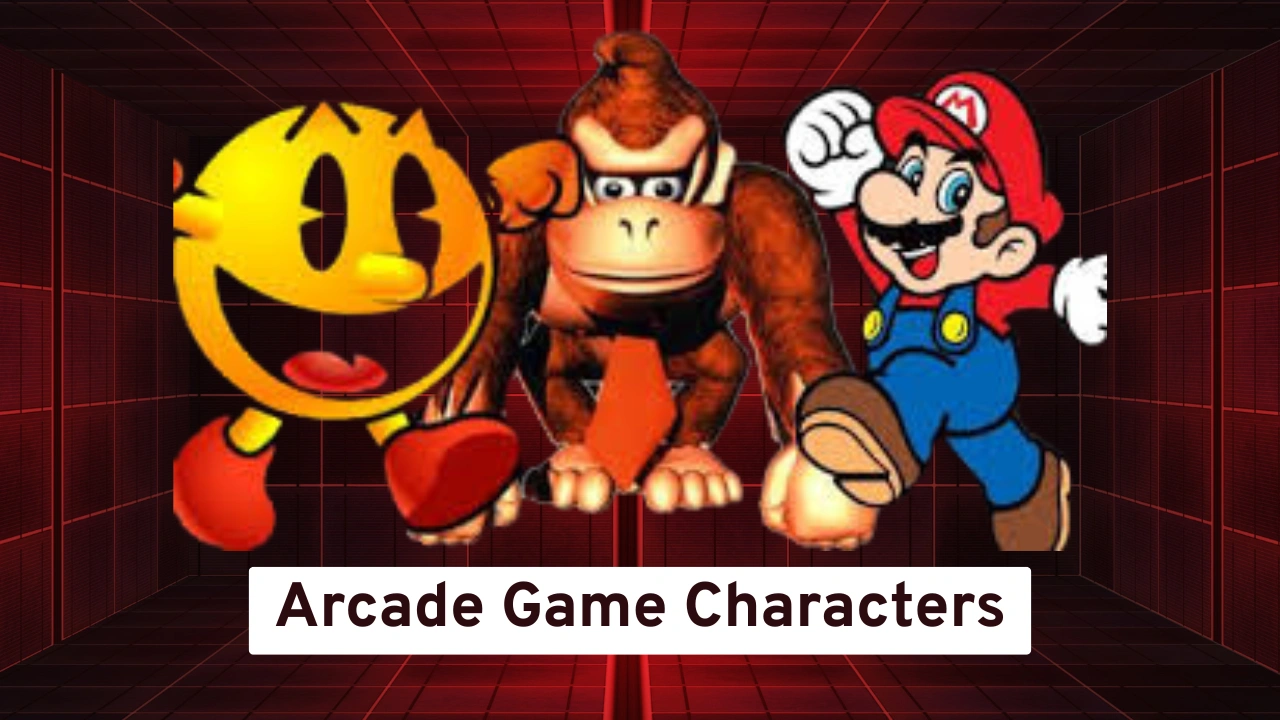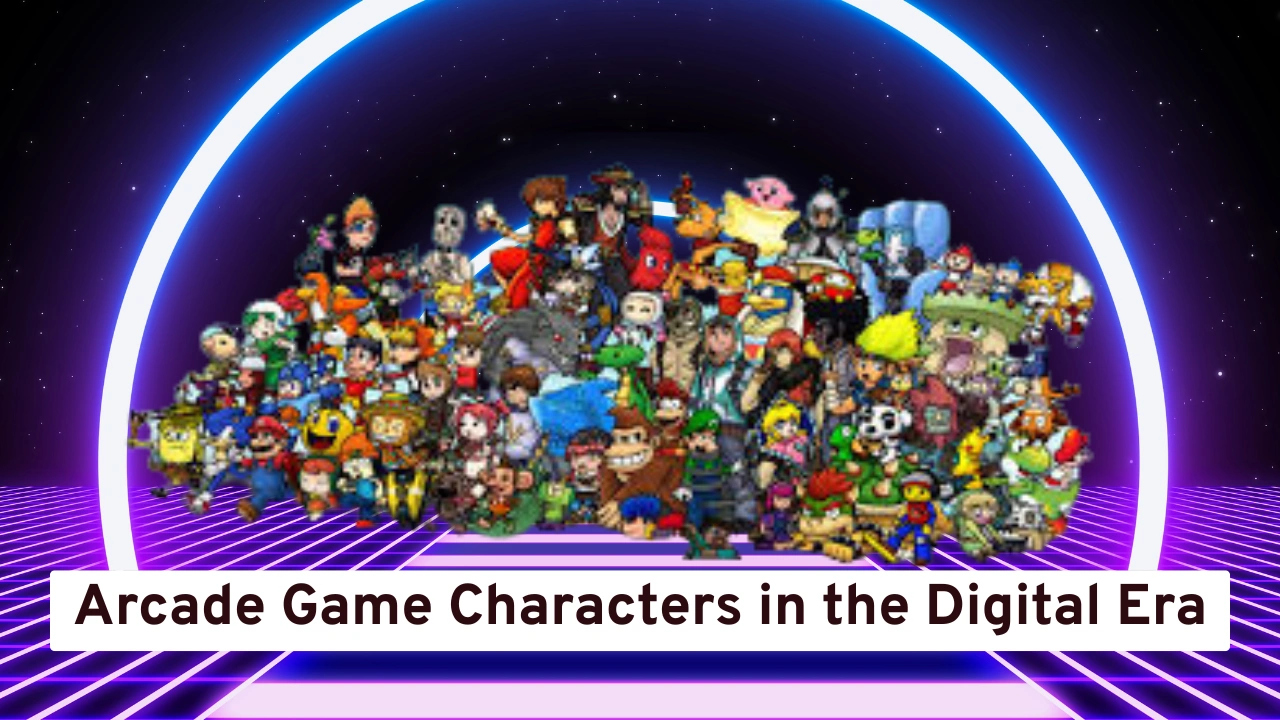Arcade Game Characters: Influence on Gaming

Arcade game characters have played a pivotal role in shaping the gaming industry. These characters are not just part of the gameplay, but also integral to the essence of video games. From the very beginning of arcade gaming to the present day, arcade game characters have captured the imagination of players worldwide. The following article delves into the history, impact, and enduring popularity of these iconic figures that have become household names.
Read more about games and marketplace of ubisoft and rainbow six siege at r6 marketplace
What is Arcade Game Characters?
Arcade games first became popular in the late 1970s and early 1980s, marking the beginning of a new era in entertainment. The emergence of arcade game characters was largely driven by the need to make these games more engaging and memorable. The most iconic arcade characters like Pac-Man, Donkey Kong, and Mario weren’t just creations for entertainment, but they became symbols of an entire generation.
Pac-Man: The First Iconic Arcade Game Character
When Pac-Man hit arcades in 1980, it revolutionized the gaming world. The simple yet addictive gameplay, combined with Pac-Man’s distinctive yellow shape, made him a worldwide sensation. Pac-Man’s main goal is to eat all the pellets in a maze while avoiding four colorful ghosts. As one of the first arcade game to gain global recognition, Pac-Man’s design and gameplay mechanics were groundbreaking. His success paved the way for many more iconic characters that followed.
Donkey Kong: A New Type of Hero
Released by Nintendo in 1981, Donkey Kong introduced another beloved arcade game character. Donkey Kong, the huge ape, was initially the villain, capturing Mario’s girlfriend, Pauline. This game marked Mario’s first appearance, but it was Donkey Kong who became the star of the game. Although Donkey Kong was the antagonist, his character’s appeal and the game’s challenging platforming made it one of the most beloved arcade games. The design of Donkey Kong proved that even villains could become legendary characters in their own right.
Also Read: Wahoo Board Game A Classic Strategy Game for All Ages
Mario: From Arcade Game Character to Global Superstar
Mario is undoubtedly one of the most recognizable arcade game of all time. Initially introduced in Donkey Kong, Mario quickly became the face of Nintendo and one of the most beloved characters in video game history. Mario’s adventures across various arcade games, including Super Mario Bros., helped define the platformer genre. With his signature red hat, blue overalls, and mustache, Mario became the embodiment of classic arcade gaming. His character’s charm and relatability have kept him relevant for decades.
The Evolution of Arcade Game Characters
As arcade gaming evolved, so did the characters. The early days of arcade games were dominated by simple, pixelated designs, but as technology advanced, so did the complexity of the characters. In the 1990s, characters like Sonic the Hedgehog and the fighters from Street Fighter brought dynamic action and personality into arcade games.
Street Fighter Characters: Fighters with Attitude
One of the most influential series in arcade game history is Street Fighter. Characters like Ryu, Chun-Li, and Blanka brought fighting games to the forefront of the arcade scene. Each fighter had a unique set of moves, special abilities, and backstory, which added depth and intrigue to their characters. The success of Street Fighter made these arcade characters iconic and established fighting games as a mainstay in arcades worldwide.
Sonic the Hedgehog: The Fastest Arcade Character
Sonic the Hedgehog is another major arcade game character who revolutionized the gaming industry. Released by Sega in 1991, Sonic’s speed and attitude made him stand out from other game characters. He became Sega’s mascot and was a direct competitor to Mario in the battle for video game supremacy. Sonic’s blue color and red shoes became as recognizable as Mario’s red hat and overalls, making him an essential part of arcade history.
The Impact of Arcade Characters on Pop Culture
Arcade characters have had a profound influence on pop culture. They are not just limited to the gaming world but have transcended into various forms of media, including movies, TV shows, comics, and merchandise. Characters like Pac-Man, Mario, and Sonic have appeared in television series, films, and comic books, solidifying their place in mainstream culture.
From Pixels to Action Figures
One of the most notable impacts of arcade characters is their widespread recognition outside the arcade. In the 1980s and 1990s, game characters were featured in action figures, clothing lines, and even cartoons. This helped these characters grow beyond just video games and become part of everyday life for fans. Mario, for example, appeared in an animated TV show, while Sonic even had his own comic book series. These adaptations helped ensure that the legacy of game characters would live on for generations.
Video Game Movies and Arcade Characters
In the 1990s, game characters made their way into feature films, the most notable being Super Mario Bros. (1993) and Street Fighter (1994). While not critically acclaimed, these movies helped further cement the place of game characters in the broader entertainment landscape. The trend of video game adaptations continues today, with more game characters appearing in movies and TV shows. The 2023 Super Mario Bros. Movie is a great example of how the popularity of these characters has only grown over the years.
Arcade Game Characters: From Pixels to 3D Models
The early arcade game characters were designed using simple 8-bit or 16-bit graphics. These early designs, while limited by technology, became iconic because they were easily recognizable. As technology progressed, the game characters transitioned from pixelated images to more sophisticated 3D models. This evolution brought a new dimension to arcade characters, allowing them to move, emote, and interact in ways that were previously impossible.
The Role of 3D Animation in Arcade Games
The advent of 3D animation technology helped arcade game characters evolve into more lifelike, three-dimensional figures. Characters like Street Fighter’s Ryu or Tekken’s Heihachi Mishima were given depth and personality through 3D modeling. This transformation allowed these characters to retain their core essence while adapting to new generations of players. The visual fidelity and movement of these arcade game characters helped games feel more immersive and cinematic, pushing the boundaries of what arcade games could achieve.
The Enduring Popularity of Arcade Characters
Despite the rise of home consoles and mobile games, game characters continue to maintain a strong presence in gaming culture. Classic arcade games such as Pac-Man, Donkey Kong, and Space Invaders are still beloved by fans around the world. These characters have stood the test of time, maintaining their popularity across generations.
Game Characters in Modern Games
Today, many modern video games still pay homage to classic game characters. Characters like Mario and Sonic continue to appear in new games, while indie developers often create retro-inspired games featuring pixelated versions of beloved arcade characters. This connection to the past helps keep the memory of these characters alive, while introducing them to a whole new generation of players.
Arcade Game Characters in the Digital Era
In the digital era, arcade game characters have found new life in mobile apps and online games. Platforms like Steam and Nintendo Switch offer classic arcade games for digital download, allowing fans to experience the nostalgia of these legendary characters. Whether through remakes or new adventures, the characters that once ruled the arcades continue to thrive in the digital world.

How Arcade Game Characters Transitioned
| No. | Topic |
|---|---|
| 1 | The Evolution of Arcade Game Characters: From Pixels to 3D Models |
| 2 | Arcade Game Characters: A Look at Their Journey from Arcades to Consoles |
| 3 | How Classic Arcade Game Characters Transitioned to Modern Platforms |
| 4 | The Legacy of Arcade Game Characters: How They Adapted to New Technologies |
| 5 | From Arcade Cabinets to Consoles: The Transformation of Arcade Game Characters |
| 6 | How Arcade Game Characters Evolved with Advancing Technology |
| 7 | The Rise of Arcade Game Characters in Home Consoles and Mobile Games |
| 8 | How Arcade Game Characters Have Shaped Gaming’s Digital Evolution |
| 9 | The Journey of Arcade Game Characters from Cabinets to Global Icons |
| 10 | How Arcade Game Characters Adapted to the Changing Gaming Landscape |
Conclusion
Arcade game characters have had a profound impact on the world of gaming and pop culture. These characters were crucial in shaping the early days of video games and have remained relevant throughout the years. Whether it’s Pac-Man, Donkey Kong, Mario, or Sonic, the legacy of these iconic arcade game characters continues to influence new generations of gamers. As technology continues to evolve, these characters will remain at the heart of the gaming experience, preserving the rich history of arcade games for years to come.






